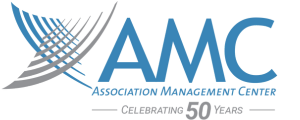
A Sample Board Orientation
So, you read my last blog post about the impact that board orientation has on an organization and are now 100% convinced that an effective board orientation is important, impactful, and worth the time investment.
What does a good board orientation look like? How best to train boards of directors in order to clarify expectations, inform them, and maximize their effectiveness?
Here is one proposed outline—see what you think:
- Vision and strategic plan. Why does your association exist? Where would you like to go? How will you get there? Discuss the common bonds and vision that should be uniting everyone in the room.
- A little bit of history. Notice here I wrote “a little bit.” Good boards are future-thinking and gratefully acknowledge the past but do not dwell on it. Most associations have a nice, short origin story that can be shared here.
- Convince them that the session they are about to participate in has real value. It is likely that several people participating in this orientation are doing so only reluctantly and are skeptical that they will learn anything useful. Convince them using some of the fancy-pants statistics I shared in my previous blog (hyperlink to it) or ones you can find elsewhere.
- Tell them their fiduciary duties. The board of directors has the ultimate legal responsibility for the actions (and inactions) of the association. It is state law–-not the executive director, not the board-–that grants directors this responsibility. Because they have this responsibility, state law also imposes on them obligations to act in the best interests of the association. Remind the board that the duty of care, duty of loyalty, and duty of obedience are fiduciary duties, not fiduciary guidelines or suggestions, and that it’s not you who is imposing these duties on them.
- Conflicts of interest. A conflict of interest (COI) occurs when an individual (particularly a board member) is involved in multiple projects or interests, one or more of which could be perceived by others as the motivation for an act or decision in the other. The conflict in a COI exists as determined by the perception of others, not when the individual is actually influenced by the secondary interest. Thus, the goal should be to identify them clearly and decide how best to deal with them. Such conflicts are not bad, per se, but they become much larger issues if they are not disclosed.
- Reducing personal liability. Many board members are concerned that they might be sued. Explain to them what board members can and should do to reduce their personal liability, such as showing up and being prepared for meetings, asking the right questions, and making sure they are informed. Also talk about additional liability protection, such as insurance and volunteer protection laws.
- Apparent authority. An association can be held liable for the actions of its directors and volunteers, even when the association does not know about, much less approve of, those actions. It’s best to talk about this issue in your orientation to minimize actions or statements by board members that are not reviewed and/or approved by the executive director or the board. This is also a great way to pre-empt that request for board of director business cards or e-mails with association-specific domains.
- Antitrust compliance. Particularly among trade associations, it is important to have and enforce an antitrust compliance policy. New members of trade association boards often can’t understand why a trade association should not act more strongly to police or even remove “the riffraff” or the “price-cutters” of the industry.
- Governing documents. You don’t necessarily need to review the bylaws with your board, but you need to let them know why the association needs to pay attention to them. A quick primer on the relationship between state laws, bylaws, and policies and procedures is helpful. Be careful here, however, lest you create the monster that is the board member who dwells in the weeds and becomes obsessed with the bylaws.
- Characteristics of exceptional boards. What do effective boards do that less effective boards do not do well? Include your wish list here, such as have a strategic focus, have a constructive partnership with staff, are mission driven, promote a culture of inquiry, transparency, and more. Boardsource and ASAE have done great work on this topic. Make sure to emphasize research so board members know you are not just pontificating.
- Board and committee structure. Incoming board members should know the organizational structures that are in place to help (hopefully) the board, volunteers, and staff effectively function. Clarify the roles of the board and committees, and discontinue those committees that are no longer needed.
- Role of the officers. This is an opportunity to clarify roles and set expectations. Does your president vote? What is the role of the president-elect? Officers generally have half as much power as is assumed by the general membership but twice as much accountability. What implications are there for member perceptions and expectations?
- Role of the board vs. role of the staff. You shouldn’t really complain about a board that micromanages if you do not set clear expectations early in your relationship with them. All board members want to contribute. If they feel they have relatively little to contribute to strategic or higher-level discussions, they will try to contribute by pointing out that the price of coffee or soda at your host hotel or convention center seems really high. They will also share with you the name of a terrific hotel they stayed at once years ago.
- Rules for board meetings. Now is a good time to briefly review any logistics and ground rules you may have for the board meeting itself, such as what a typical agenda looks like, what a consent agenda is, and why it’s a good idea to ask questions about an issue before a board meeting.
- Parliamentary procedure. New board members may be intimidated at the thought of being admonished by the board for the innocent misuse or relative lack of knowledge of parliamentary procedure. Take the opportunity to reassure them that this is not the case. This also is a good opportunity to remind your current board that parliamentary procedure should be used sparingly and should not be viewed as a game of “gotcha,” where minor mistakes are loudly and triumphantly identified.
- Voting by e-mail. Every board wants to know about this. Laws vary by state, so know and discuss what you can and cannot do via e-mail.
- Dates of upcoming board and governance meetings. Have board members put these dates on their calendars early.
- Association trends. Depending on your board, it may be useful to discuss recent research or studies that point to association trends. Examples include generational differences among association members, the effect of the economy on association revenue, and conflict management.
The outline above is just one example, and I hope will serve as a starting point for you. There is no one perfect orientation; in fact, an orientation that is right for one board may well be inappropriate for a different board. And, an orientation session is only one part of an effective onboarding program, which might also include a board handbook, regular calls to board members, board “buddies” or mentors, and perhaps a more detailed financial orientation for the treasurer.
But, the one thing we should not do is nothing. As noted in “Leading with Intent,” for any board to work effectively, it must be clear about what the work is. It is clear that stronger orientation and ongoing education about the board’s essential roles and responsibilities is a potentially high-leverage opportunity for board development.”
Dave Bergeson serves as vice president of client relations on AMC’s Leadership Team and is the executive director for the Association of Pediatric Hematology/Oncology Nurses.
Be the first to know about the latest articles, news, and events from AMC. Sign up for our emails!


